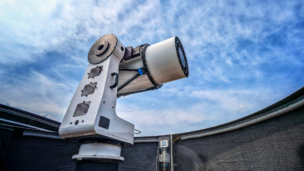A Defense Department pilot program hired private satellite operators last month to provide intelligence directly to battlefield commanders—and became the newest flashpoint in an argument between the defense and intelligence communities over who should fill the military’s commercial space imagery demands.
What we know: Space Systems Command tasked a private satellite operator to provide US IndoPacific Command a 24-hour heads up ahead of a Chinese military satellite launch, Congressional sources told Payload. Within seven days of the launch, the company also provided in-space imagery of the Chinese satellite.
“Under the Pilot Program Tactical Surveillance, Reconnaissance, and Tracking (TacSRT), vendors were on contract to provide analytic insights regarding potential locations of interest via Commercial and Publicly Available Information,” a spokesperson for SSC told Payload when asked about the demonstration. “We can confirm [TacSRT] received a demonstration report providing this information on Apr. 22, 2024.”
While it’s not clear the events are related, China launched the first commercial imaging satellite in a new constellation seven days before, on April 15.
A spokesperson for Maxar Intelligence, one of the few US companies known to provide both Earth and non-Earth satellite imagery, told Payload that “we are not able to confirm or speculate on how [non-Earth imaging capabilities] are being used for specific customers or contracts.”
Trend watch: Right now, the National Reconnaissance Office is the buyer and distributor of commercial space intelligence for the entire military, a process that some in uniform say can be too slow. The Space Force is increasingly insistent that it should distribute that information directly to battlefield commanders, a concept known as tactical intelligence, surveillance, and reconnaissance. The NRO did not provide a comment for this story.
“The joint force commander needs to directly be able to task those [space-based] assets and prioritize retasking,” Space Force Lt. Gen David Miller said at the GEOINT conference earlier this month.
The White House waded into the conflict last week. National Space Council executive secretary Chirag Parikh acknowledged “something is going to change,” and said the council is talking with the National Geospatial-Intelligence Agency and the DoD to figure out how to quickly fill military intelligence needs while respecting the IC’s role and preventing redundancy.
TacSRT was established in 2023, according to Gen. Chance Saltzman, the Space Force’s top officer, who said the office has previously provided disaster response assistance.
Not without a fight: “They faced opposition in even doing this exercise, and we hear consistently that the IC is opposed to DOD acquiring commercial imagery directly,” Rep. Seth Moulton (D-MA) said at a May 1 budget hearing, the first time the demo was publicly revealed.
John Plumb, the outgoing Pentagon space policy chief on the witness stand, acknowledged that those guidelines date back to 2003 and are deserving of review. But asked later about the demo, he told Payload “there should be no misconstruction—I was not responding to, nor do I have knowledge of, whatever Chinese launch Rep. Moulton was referring to.”
Moulton’s office declined to provide further details, and spokespeople for Space Force, Space Command, and IndoPacom said they couldn’t find any information about the demonstration.
It’s worth noting that the US government has never directly acknowledged observing a Chinese satellite using space-based sensors, though Space Force surveillance satellites have maneuvered near both Russian and Chinese assets, according to the Secure World Foundation’s 2024 Counterspace Report.




